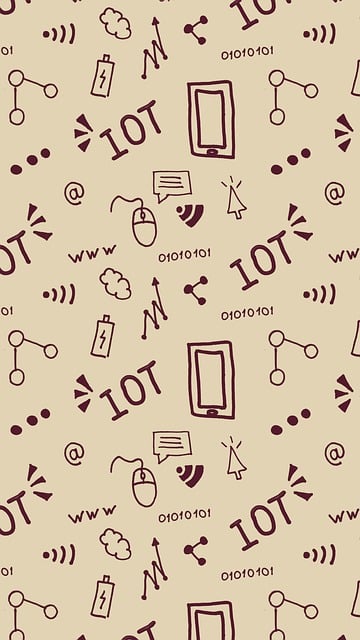Shopify AI chatbots enhance customer interaction with personalized experiences, 24/7 availability, and efficient multi-conversation handling. Leveraging natural language processing, these virtual assistants understand customer intent, offer product recommendations, process orders, and learn from each interaction. Integrated with Shopify's e-commerce platform, they include automated inventory updates and customer feedback gathering. Implementing a Shopify AI chatbot requires selecting a compatible platform, creating a Shopify store, integrating the chatbot, testing, and monitoring performance. To maximize effectiveness, define clear goals, understand target audience needs, use NLP for context-sensitive conversations, deliver dynamic content, and conduct regular performance reviews.
Unleash the power of artificial intelligence in your Shopify store with an AI chatbot! This innovative technology is transforming e-commerce, offering personalized customer interactions and boosting sales. In this comprehensive guide, we’ll explore how Shopify AI chatbots enhance user experience and drive conversions. From understanding their capabilities to implementing and optimizing, we break down everything you need to know about these intelligent assistants. Discover the benefits and features that make them a game-changer for your online business.
- Understanding Shopify AI Chatbots: Benefits and Features
- Implementing Shopify AI Chatbot: Step-by-Step Guide
- Best Practices for Optimizing Your Shopify Chatbot Experience
Understanding Shopify AI Chatbots: Benefits and Features

Shopify AI chatbots are transforming the way businesses interact with their customers, offering a range of benefits that boost sales and enhance customer satisfaction. These intelligent virtual assistants leverage artificial intelligence to provide personalized experiences, answering queries, offering product recommendations, and even processing orders. With their advanced natural language processing capabilities, they understand customer intent, enabling them to engage in meaningful conversations.
One of the key advantages is their 24/7 availability, ensuring customers receive instant support regardless of time zones or holiday schedules. They can handle multiple conversations simultaneously, reducing response times and increasing efficiency. Additionally, Shopify AI chatbots learn from each interaction, continually improving their performance. Features like automated inventory updates, integration with Shopify’s e-commerce platform, and the ability to gather customer feedback make them indispensable tools for modern online retailers.
Implementing Shopify AI Chatbot: Step-by-Step Guide

Implementing a Shopify AI Chatbot is a strategic move for any e-commerce business looking to enhance customer engagement and sales. Here’s a step-by-step guide to help you navigate this process seamlessly.
1. Choose an Integratable AI Chatbot Platform: Begin by researching and selecting an AI chatbot platform that offers Shopify integration. Ensure it aligns with your store’s needs, whether for simple customer support or complex product recommendations. Popular choices include Dialogflow, ManyChat, and MobileMonkey.
2. Set Up Your Shopify Store Account: Once you’ve chosen a platform, create a Shopify store account if you don’t have one already. This will enable seamless integration between your store and the AI chatbot platform. Follow Shopify’s straightforward setup process to get your store up and running.
3. Integrate the AI Chatbot: Log in to your selected AI chatbot platform and follow its instructions for integrating with Shopify. This usually involves connecting your Shopify store account during the onboarding process.
4. Customize Chatbot Interactions: Tailor the chatbot’s responses and actions to match your brand voice and customer service expectations. Create greetings, FAQ messages, product recommendation scripts, and checkout assistance dialogues.
5. Test Before Launching: Rigorously test the chatbot’s functionality across various scenarios before deploying it live. Check its ability to answer common queries, offer product suggestions, and guide customers through the checkout process.
6. Deploy and Monitor: Once satisfied with testing, go live with your Shopify AI Chatbot. Continuously monitor its performance using analytics tools provided by both Shopify and your chosen chatbot platform.
Best Practices for Optimizing Your Shopify Chatbot Experience

To optimize your Shopify AI chatbot experience, start by setting clear goals and defining your target audience. Tailor your chatbot’s responses to address their specific needs and pain points, ensuring relevant and engaging interactions. Use natural language processing (NLP) to enable context-aware conversations, allowing the chatbot to understand user intent better.
Implement dynamic content delivery based on user behavior and preferences. Personalize recommendations and offers to enhance customer satisfaction and drive sales. Regularly review chatbot performance metrics, such as conversion rates, average session duration, and customer feedback, to identify areas for improvement. Continuously update and refine your Shopify AI chatbot to deliver an optimal shopping experience that keeps customers engaged and coming back for more.
Shopify AI chatbots are transforming the e-commerce landscape, offering businesses an efficient and engaging way to interact with customers. By implementing these intelligent assistants, merchants can enhance customer service, boost sales, and provide a personalized shopping experience. Following the strategies outlined in this article—from understanding key benefits to best practices—will help optimize your Shopify chatbot’s potential, ensuring it becomes a valuable tool for your online store’s success.
